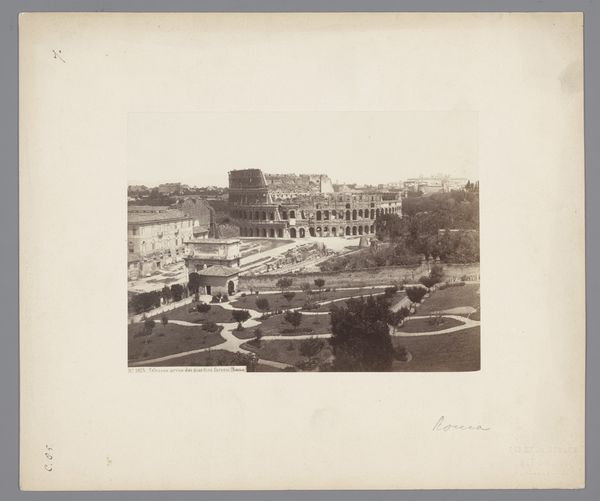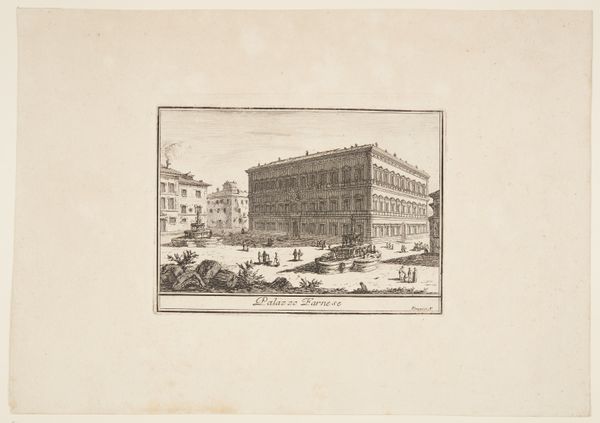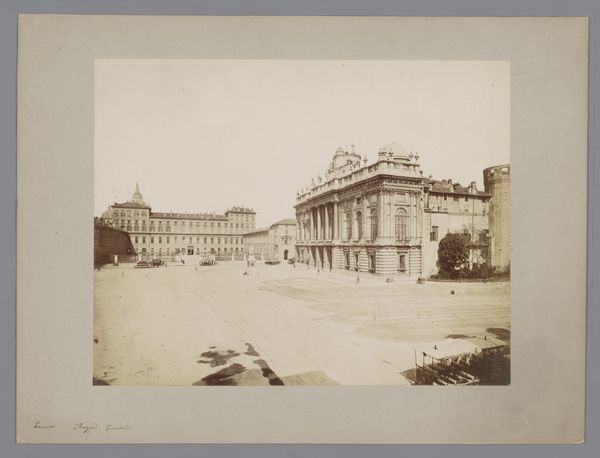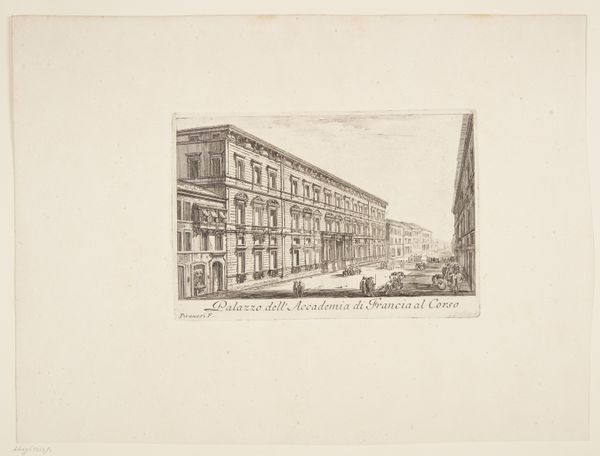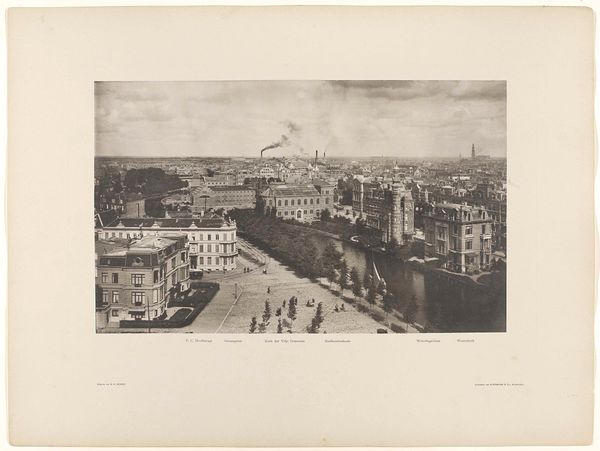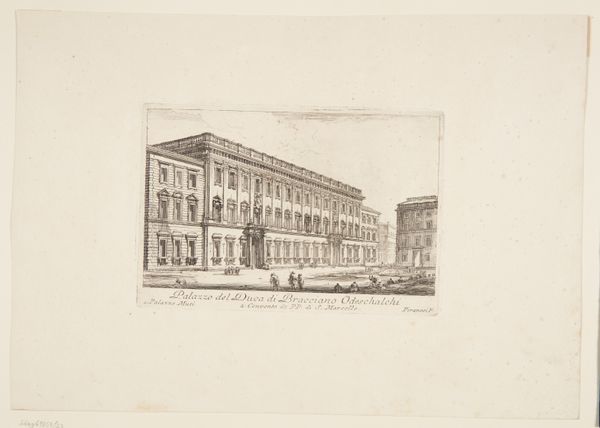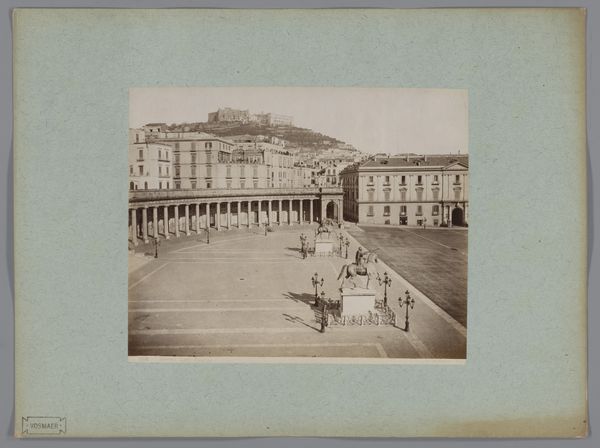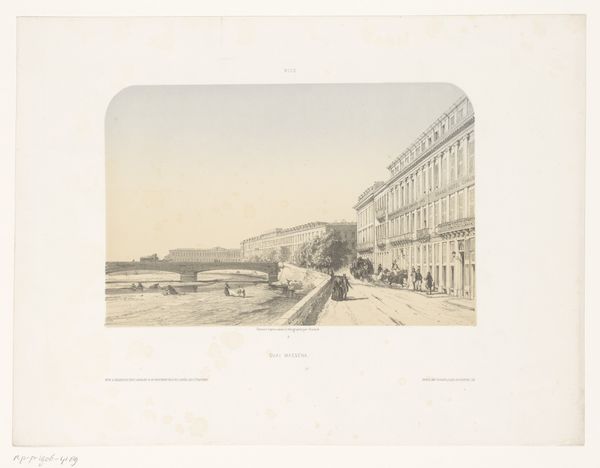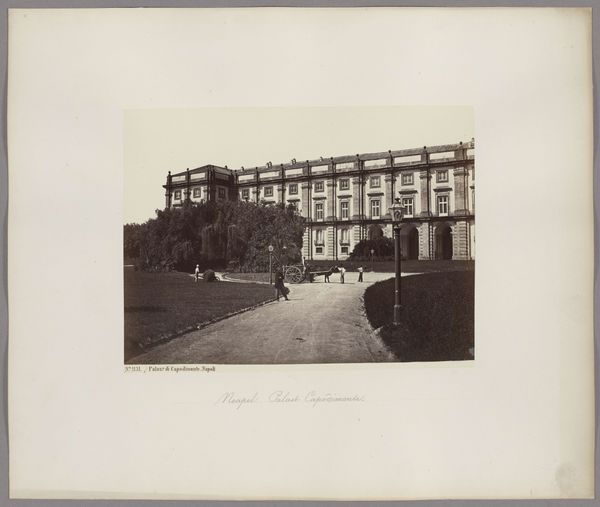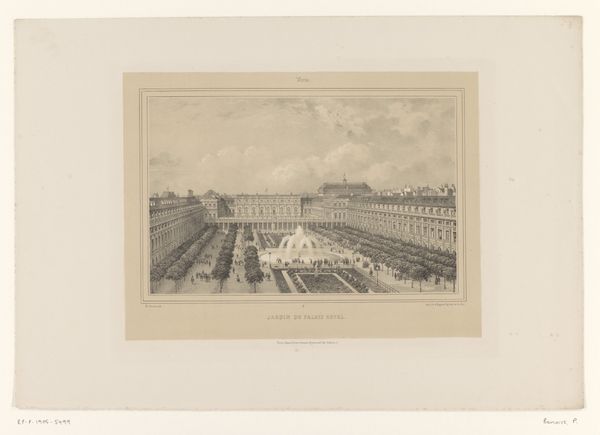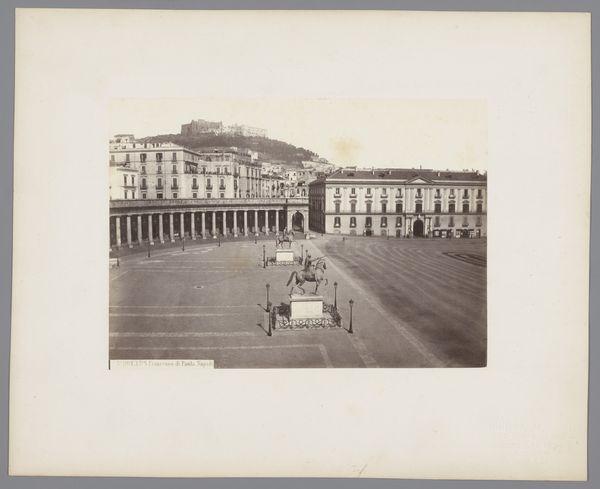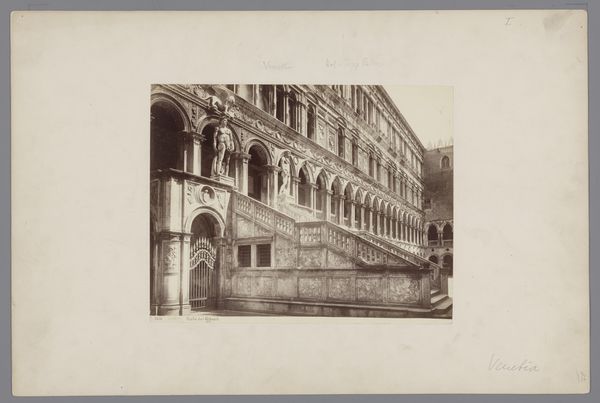
albumen-print, paper, photography, albumen-print, architecture
#
albumen-print
#
16_19th-century
#
landscape
#
paper
#
photography
#
cityscape
#
italian-renaissance
#
italy
#
albumen-print
#
architecture
#
realism
Copyright: Public Domain
Curator: This albumen print, "Naples, Largo del Municipio," created by Giorgio Sommer around 1860 to 1870, captures a fascinating period in the city's urban development. The photograph is currently housed in the Städel Museum. Editor: It has such a tranquil atmosphere. Despite the urban setting, the balanced composition, with its receding lines and orderly rows of trees, almost feels like a stage set. Curator: Precisely. This square, now known as Piazza Municipio, held enormous symbolic weight. The newly unified Italian state sought to represent its modernity through architectural grandeur and urban planning. Sommer’s photograph offers us insight into that construction of a modern, "Italian" Naples. Editor: I’m immediately drawn to the trees themselves. Arranged so formally, they represent order and control. Trees are such powerful symbols – life, growth, and also a connection to nature – carefully manicured within the built environment. This resonates with broader artistic themes of nature versus culture during the rise of industrialisation. Curator: Absolutely. Consider that photography itself, as a new medium, was deeply intertwined with these ideas of progress. Images like this weren't simply documenting reality, they were shaping perceptions of what Italy was, or was becoming. It's also worth remembering that this location was directly tied to royal power at the time; near where the Bourbon Kings formerly held their residence. This highlights a specific and very intentional symbolic break with the past, framed within a new visual rhetoric of urban order. Editor: I notice a certain austerity too, despite the sunny disposition. It lacks some of the dynamism, or chaos, usually present in urban scenes of this period. Perhaps the light exposure or long capture time of the early photographic techniques lend this quietness to it, as if time itself is slowing within the urban arena. What do you suppose audiences may have extracted from this work in its day? Curator: Perhaps an idea of Italian stability and promise? By representing the careful arrangement of social space, Naples became legible as "orderly" to both those inside Italy and outsiders seeking a sense of security, civility and governance during these tumultuous shifts of modernization. This photo operated within very strategic frameworks of political representation, no doubt about it. Editor: Yes, that makes sense. Considering the layers of power dynamics embedded, what I initially perceived as tranquil now takes on a slightly different tone. Thank you! Curator: An exciting perspective. Always nice to bring these historical contexts forward when re-evaluating this arresting image!
Comments
No comments
Be the first to comment and join the conversation on the ultimate creative platform.

